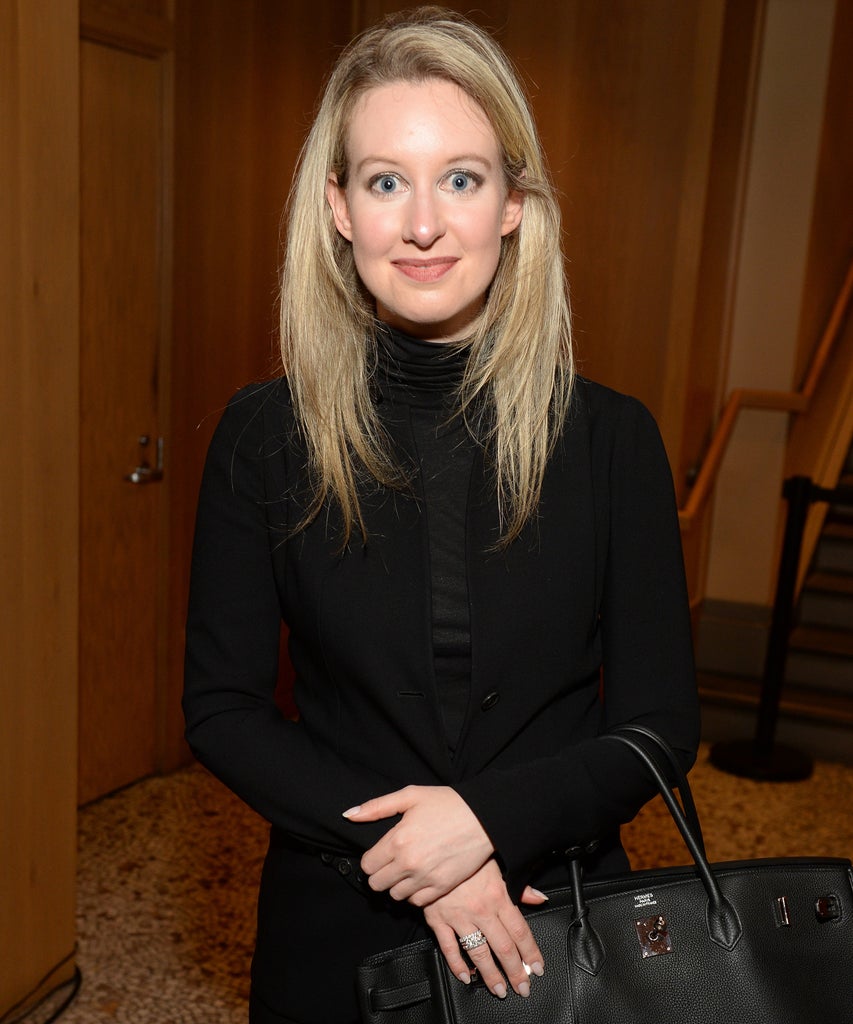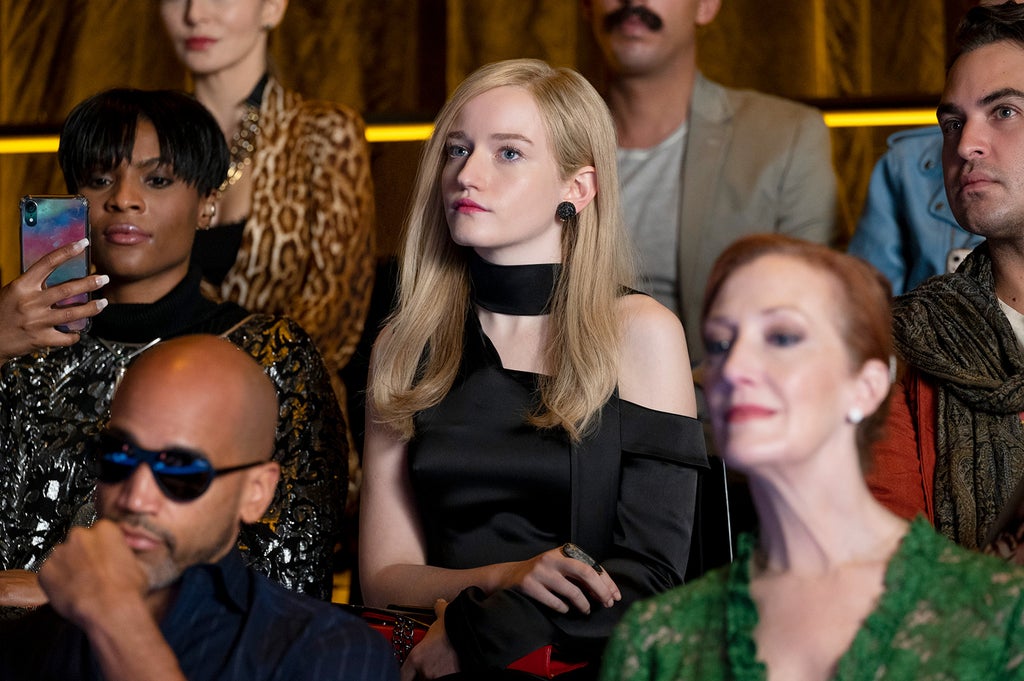Anna Sorokin — better known as “Anna Delvey” — made half of New York City think she was a German billionaire heiress by dressing up in Alaïa dresses and Celine sunglasses. Elizabeth Holmes modeled her style after Steve Jobs to charm investors, politicians, and technocrats into believing she could revolutionize the healthcare industry. Even as society can see through these famous grifters — and their crimes — years later, it’s still tempting to admire their style. After all, it takes a lot of work to dress the part.
“It is like putting on a costume, particularly for female con artists,” says journalist Jessica Pressler, who wrote the New York Magazine articles that inspired the Netflix series Inventing Anna, of which she is also a producer, and the 2019 movie Hustlers, starring Jennifer Lopez.
“Women are judged to such a huge extent by our exteriors; what you wear is kind of who you are and the details matter,” she says. As a firsthand witness of these personas, Pressler says that “the clothes were their act.”
The key to a successful scam lies in how much a grifter can get others to take them seriously. That often leads to parallels between the ways high-profile scammers get dressed. For example, Pressler says that both Sorokin and the Hustlers women often wore black to up their credibility: “Anna would tend to wear these black little baby doll dresses by Alaïa, and with the Hustlers girls, it was the same; they said they had to tone it down on their dates and that’s why they wore black.”

Theranos founder Elizabeth Holmes also capitalized on black to transform herself from Stanford University dropout to Silicon Valley entrepreneur. “The fact that she felt like she wouldn’t be taken seriously really pushed Elizabeth to kind of mimic Steve Jobs’ turtleneck and it was truly to appear like she had no time to focus on shopping but rather Theranos and its success,” says Claire Parkinson, the costume designer for the upcoming Hulu series The Dropout, out on March 3, based on Holmes’ story.
Parkinson used Holmes’ uniform as a starting point for her work on the series. “The first thing I did with Amanda Seyfried in our fitting was try on the black turtleneck, so she could feel like she knew who the character was becoming,” she recalls.
To highlight Holmes’ evolution, Parkinson created a sharp contrast between the character’s college uniform and her CEO persona, diving into Y2K fashion that was not particularly stylish, including Abercrombie and American Eagle hoodies, for the early years, and later, sourcing designer garments from The RealReal for Holmes’ pre-turtleneck years.
“Within the script and the story, there is a time where she is getting more successful with Theranos and she meets a character, who’s a real person and a designer for the first Apple iPhone, and she really was kind of this catalyst to Elizabeth to take her wardrobe seriously,” says Parkinson. The costume designer used this moment in the series to establish the transformation of Holmes’ character.
For Lyn Paolo, the costume designer for Inventing Anna, the transformation happened in reverse, as audiences first meet Anna in her glory days — scamming New York City’s elite and her not-so-loaded group of friends out of thousands of dollars, allegedly to start an arts foundation and fund her lavish lifestyle — and later, learn how her house of cards fell, landing her in prison. Viewers get to see Sorokin shapeshift from her glitzy persona into an innocent-looking young woman with sober-toned dresses and black choker necklace in the courtroom during her 2019 trial. “People thought of Anna as an amazing fashionista,” says Paolo, who also worked on Scandal. “The coverage she got, even for what she wore in court, was fascinating.”

“What’s fascinating in the show is that you get to see like 10 different Annas based on different people’s stories,” Paolo adds. “Because she isolated herself with a group of friends each time, they all thought it was something new and fresh, but we see her wearing the same things over and over.”
It’s this consistency, says Pressler, that allows scammers like Sorokin and Holmes to distract people from their actions. “They understood that there were certain different kinds of people that dress a certain way, and that’s a really intelligent move,” she adds.
Dressing the part can also make you look like you belong. Kari Ferrell, also known as “the hipster grifter,” represents another example of this approach. In the late 2000s, Ferrell preyed upon Williamsburg’s skinny jean-clad hipsters, scamming them out of their money and lying her way into a job at Vice. (Vice Media Group is Refinery29’s parent company.) She got the part because she already looked she belonged. Years after The Observer’s Doree Shafrir wrote about her grift, Ferrell’s distinctive look remained a popular Halloween costume in New York City’s party scene. All it required was a fake chest tattoo, a pair of American Apparel leggings, rectangle-shaped black glasses, and a tube top.
A similar case happened in the mid-2010s when Elizabeth Holmes became an icon of the girlboss generation. In 2015, she received the “Entrepreneur of the Year” prize at the Glamour Women of the Year Awards, wearing an all-black two-piece suit with matching pumps. That same year, she appeared on the covers of The New York Times Style Magazine, Inc., and Forbes clad in a similar suit, paired with her signature black turtleneck.
“She was clearly a mimic,” says Parkinson, referring to her style’s similarity to that of other powerful female entrepreneurs of the era, including Nasty Gal’s Sophia Amoruso, Glossier’s Emily Weiss, and The Wing’s Audrey Gelman. Holmes was able to climb to Forbes’ list thanks largely to the persona she built — one she constructed in part on the basis of a closet full of 100 turtlenecks.
While Holmes, Sorokin, and Ferrell committed real-life fraud and have all been found guilty, Pressler says their scamming uniforms reveal a larger reality about our culture in general. “It’s not just them; we’re all doing this,” she says, referring to the ways people create personas through style. “Everybody is kind of dressing the part — they were just dressing for the jobs they wanted.”
Like what you see? How about some more R29 goodness, right here?
How Scammers Became Icons Of The Girlboss Era
Anna Delvey Has Been Released From Prison
Why Julia Garner Went To Visit Scammer Anna Delvey
from Refinery29 https://ift.tt/OgoJKDZ
via IFTTT
